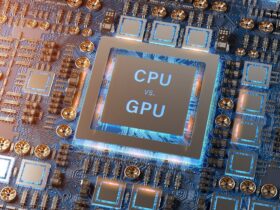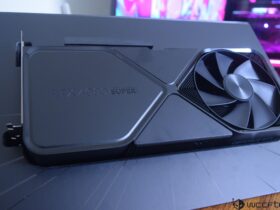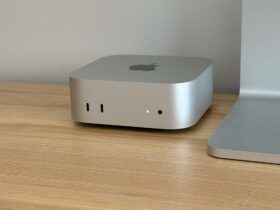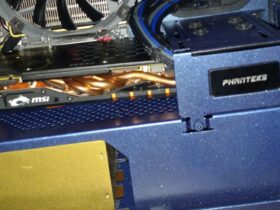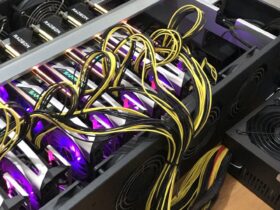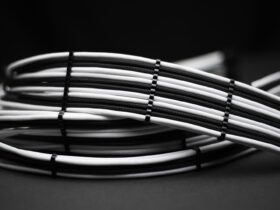Daftar Isi
A reliable power supply unit (PSU) is essential for the smooth operation of your computer. When your Power Supply Unit encounters problems, it can lead to system instability, crashes, or even hardware damage. In this comprehensive PSU Troubleshooting guide, we’ll explore common issues and provide practical solutions to keep your system running smoothly.
No Power Output: The Silent PSU
Issue
You press the power button on your computer, expecting the familiar hum of fans and the glow of LEDs, but instead, you’re met with eerie silence. No signs of life, just a void of darkness.
Possible Causes
Faulty Power Switch
Sometimes, the culprit is as simple as a misplaced switch. Check if the power switch on the Power Supply Unit itself is toggled to the “on” position. It’s a small detail, but it could be the key to resolving the issue.
Dead PSU
If the silence persists even after ensuring the power switch is on, the problem might lie deeper within the Power Supply Unit itself. A dead PSU means it’s not delivering any power to your components, rendering your system inert.
PSU Troubleshooting for this Issue
Check the Power Switch
Before diving into complex troubleshooting, start with the basics. Ensure that the power switch on the back of the Power Supply Unit is firmly set to the “on” position. It’s a quick check that might save you from unnecessary hassle.
Test with a Known-Good Power Supply Unit
If the power switch isn’t the issue, it’s time to assess the health of your Power Supply Unit. Swap it out with a known-working Power Supply Unit to see if the problem persists. If your system springs to life with the replacement Power Supply Unit, it’s a clear indication that the original Power Supply Unit is indeed the culprit.
Overheating and Fan Noise: Keeping Cool Under Pressure
Issue
Your PC’s Power Supply Unit fan is roaring like a jet engine, or worse, your system unexpectedly shuts down due to overheating. These signs of distress can disrupt your computing experience and potentially harm your hardware.
Possible Causes
Dust Accumulation
Over time, dust particles can accumulate inside your Power Supply Unit, clogging vents and impeding airflow. This buildup restricts the Power Supply Unit’s ability to dissipate heat, leading to overheating issues.
Faulty Fan
A malfunctioning or aging fan can struggle to maintain optimal cooling performance. When the fan fails to operate efficiently, it not only generates excessive noise but also fails to adequately cool the Power Supply Unit components, exacerbating the risk of overheating.
Fixes
Clean the Unit
Regular maintenance is key to keeping your Power Supply Unit running smoothly. Use compressed air to carefully remove dust and debris from the Power Supply Unit’s vents and fan blades. Pay close attention to these areas to ensure unobstructed airflow.
Replace the Fan
If cleaning fails to resolve the issue, it may be time to consider replacing the Power Supply Unit fan. Look for a compatible replacement fan with similar specifications to ensure optimal cooling performance and minimal noise.
Read More: Eco-Friendly PSUs: Energy Efficiency and Sustainability
Voltage Fluctuations: The Unstable Power Supply Unit
Issue
Your computer seems to have a mind of its own, prone to sudden reboots, freezes, or dreaded blue screens. These erratic behaviors could stem from voltage fluctuations originating from your Power Supply Unit, casting a shadow of uncertainty over your computing experience.
Possible Causes
Voltage Regulation Failure
As PSUs age, their ability to maintain consistent voltage levels may diminish. This decline in voltage regulation can result in fluctuations that disrupt the stability of your system, leading to a range of performance issues.
Power Surges
External factors, such as lightning strikes or grid disturbances, pose a threat to the stability of your PSU. These power surges can introduce sudden spikes in voltage, overwhelming the PSU’s capacity to deliver steady power to your components.
Fixes
Invest in a Quality PSU
The cornerstone of a stable and reliable PC setup lies in a high-quality PSU. Opt for a reputable brand known for its robust voltage regulation capabilities. Investing in a reliable PSU ensures consistent power delivery, minimizing the risk of voltage-induced disruptions.
Use a Surge Protector
Shield your precious PSU from the unpredictable nature of power surges by incorporating a surge protector into your setup. These devices act as a first line of defense, intercepting and dissipating excess voltage before it reaches your PSU, safeguarding against potential damage and instability.
Conclusion
In summary, PSU troubleshooting is crucial for maintaining a healthy computer system. Remember to check the power switch, keep your PSU cool, and invest in a quality unit. By following these guidelines, you’ll ensure a stable and efficient computing experience.








